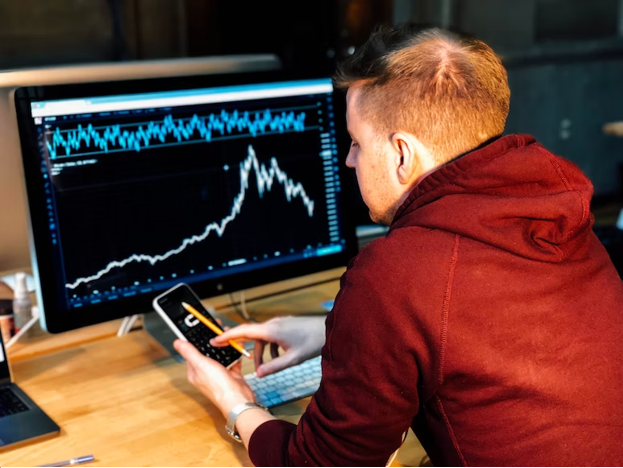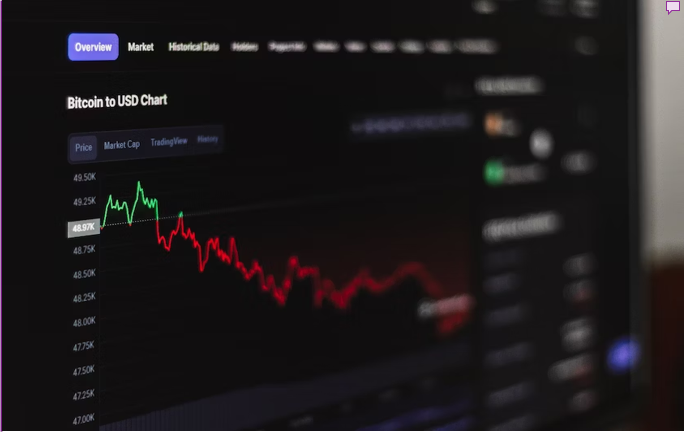Technical analysis is a powerful tool that traders use to gain insight into market movements and make informed trading decisions. While basic technical analysis techniques such as trend lines, moving averages, and support/resistance levels are useful, advanced techniques can provide a deeper understanding of market dynamics.
So, have you already started forex trading without commission and are you looking for more advanced tools and techniques to use? In this article, we will explore four advanced technical analysis methods: Elliott wave theory, Fibonacci retracements and extensions, harmonic patterns, and Market Profile.
Elliott Wave Theory
Elliott wave theory, developed by Ralph Nelson Elliott in the 1930s, is a method of analyzing market price movements using wave patterns. The theory is based on the idea that markets move in repetitive cycles, which can be broken down into smaller waves. These waves can help predict future price movements and identify potential trading opportunities.
The theory is built around two main concepts: impulse waves and corrective waves. Impulse waves are composed of five smaller waves, while corrective waves consist of three smaller waves. The pattern of these waves creates an overall structure, with each wave having a specific set of characteristics.
To apply Elliott wave theory to your trading, you’ll need to familiarize yourself with the different wave patterns and their corresponding rules. Here are some key points to remember:
- Wave 2 should never retrace more than 100% of Wave 1.
- Wave 3 is typically the longest and strongest wave in the sequence.
- Wave 4 should not overlap with the price territory covered by Wave 1.
- Wave 5 often ends at or near the same price level as Wave 3.
By identifying these wave patterns in your chart analysis, you can gain valuable insights into potential market reversals, trend continuations, and entry/exit points.
Fibonacci Retracements and Extensions
Fibonacci retracements and extensions are popular technical analysis tools that traders use to identify potential support and resistance levels in the market. Developed by Leonardo Fibonacci, an Italian mathematician in the 13th century, these tools are based on a series of numbers known as the Fibonacci sequence. The key ratios derived from this sequence are 23.6%, 38.2%, 50%, 61.8%, and 78.6%.
To apply Fibonacci retracements and extensions to your trading, follow these steps:
- Identify a significant price swing (upswing or downswing) on your chart.
- Use the Fibonacci retracement tool to draw lines at the key Fibonacci ratios, starting from the swing low and extending to the swing high for an upswing, or from the swing high to the swing low for a downswing.
- Look for potential reversal points at the Fibonacci retracement levels, which may act as support or resistance.
- Use the Fibonacci extension tool to project potential price targets beyond the swing high or low, using the same key ratios.
Fibonacci retracements and extensions work best when used in conjunction with other technical analysis tools, such as trend lines, moving averages, and candlestick patterns. By combining these methods, you can increase the probability of identifying high-probability trade setups and managing risk effectively.

Harmonic Patterns
Harmonic patterns are geometric price structures that utilize Fibonacci ratios to predict potential reversal points in the market. These patterns are based on the work of H.M. Gartley, who introduced the concept in his 1935 book “Profits in the Stock Market.” Since then, traders have developed numerous harmonic patterns, such as the Gartley, Bat, Butterfly, Crab, and Cypher patterns.
Each harmonic pattern consists of a specific set of Fibonacci ratios that define the structure of the pattern. For example, a Gartley pattern consists of an initial XA leg, followed by three corrective legs (AB, BC, and CD) that form a distinct shape resembling the letter “M” or “W,” depending on the direction of the pattern.
To trade using harmonic patterns, follow these steps:
- Identify a potential harmonic pattern on your chart.
- Measure the Fibonacci ratios between the legs of the pattern to confirm its validity.
- Look for confirmation signals, such as candlestick patterns or divergence in oscillators, to support the potential reversal point.
- Place your entry, stop-loss, and take-profit orders based on the pattern’s structure.
Keep in mind that harmonic patterns are not foolproof and should be used in conjunction with other technical analysis tools to increase the probability of successful trades.
Market Profile
Market Profile, developed by Peter Steidlmayer in the 1980s, is a method of organizing and displaying market data in a way that reveals the underlying market structure. Unlike traditional charting techniques, which focus on price and time, Market Profile emphasizes the importance of volume and price levels.
The core concept of Market Profile is the distribution of trading activity at different price levels. By plotting this distribution, traders can identify areas of high and low volume, known as “value areas” and “low volume nodes,” respectively. These areas can provide valuable insights into potential support and resistance levels, as well as market sentiment and trading opportunities.
To incorporate Market Profile into your trading strategy, consider the following steps:
- Identify value areas and low volume nodes on your chart.
- Use value areas to determine potential support and resistance levels, as well as entry and exit points for trades.
- Monitor market activity around low volume nodes to identify potential breakouts or reversals.
- Combine Market Profile with other technical analysis tools, such as trend lines and moving averages, to confirm your trading signals.
Conclusion
Advanced technical analysis techniques, such as Elliott wave theory, Fibonacci retracements and extensions, harmonic patterns, and Market Profile, can provide traders with a deeper understanding of market movements and help them make more informed trading decisions. By incorporating these methods into your trading strategy, you can improve your ability to identify high-probability trade setups and manage risk effectively.
However, it’s essential to remember that no single technical analysis method is foolproof. Always use a combination of tools and techniques to increase the probability of successful trades, and continually refine your trading strategy based on market feedback and performance.
Related Posts











